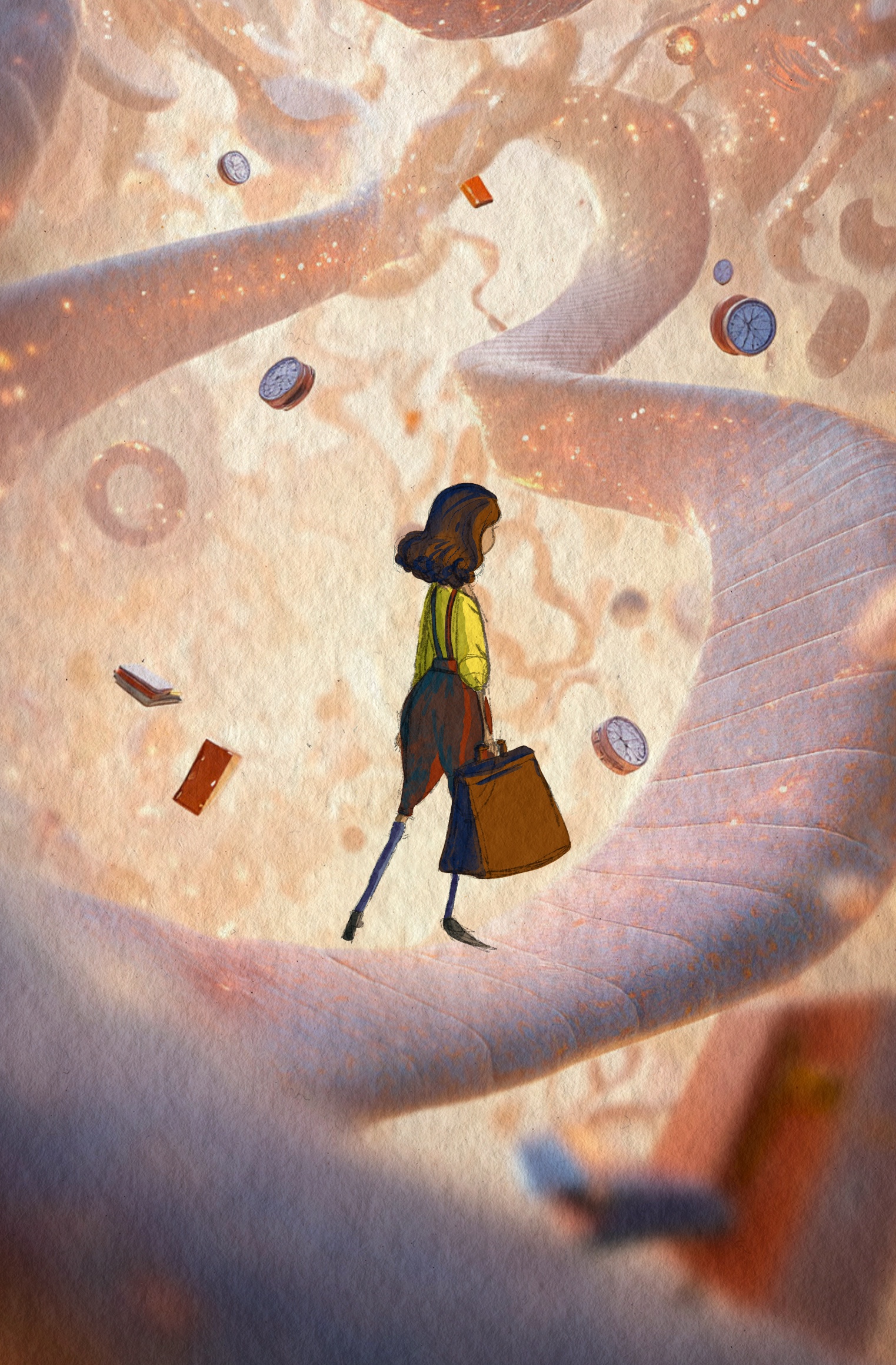Archives
-
Methodology Special IssueVol. 3 No. 1 (2025)
Kia ora and welcome to the latest edition of Rangahau Aranga.
This edition is the journal’s first issue to focus on research methodologies.
We hope that this issue will provide a resource for all future postgraduate students approaching their research and wondering where to start.
The methodologies explored in this issue range from qualitative and quantitative research approaches through to mixed methods, heuristic inquiry, systematic and integrative reviews, narrative inquiry, appreciative inquiry, indigenous methodologies and much more.
This issue has been coordinated by Rangahau Aranga student editors and by Te Mātāpuna (AUT Library) Research Services Librarians.
Many thanks to the authors for supporting this journal and to the staff and students who undertook peer review at a very busy time of year!
Cover art:
Zohreh K.M. Shirazi. The Illuminated Traveller: A Methodological Framework (2024). Digital painting created by the artist, with the aid of AI to enhance efficiency and precision in the process. The artwork reflects a seamless blend of traditional artistic techniques and contemporary technological tools, embodying the research’s transdisciplinary approach.
This composition represents The Illuminated Traveller, a project exploring Iranian mystical wisdom through the narrative journey of Mana, a young woman guided by Farhang, a mystical figure. Rooted in Suhrawardi’s Illuminationist philosophy and Sufi traditions, the artwork symbolises light as an agent of transformation and self-discovery. The imagery conveys themes of cultural identity and spiritual growth, deeply intertwined with the artist’s personal journey and reflective practice.
While AI served as a supportive tool in enhancing the visual quality and workflow, the essence of the piece is grounded in the artist’s vision and creative craftsmanship. The resulting artwork bridges timeless cultural wisdom with the possibilities of digital storytelling, offering a contemporary lens on Persian mystical traditions.
Zohreh K.M. Shirazi is an artist, researcher, and storyteller based in Aotearoa, originally from Iran. Her work intertwines philosophical inquiry, artistic practice, and digital technology to preserve and revitalise Persian cultural heritage. This project reflects Shirazi’s ongoing commitment to connecting ancient narratives with modern audiences through innovative methods.
-
 Moanaroa: Pacific and Indigenous Research
Vol. 3 No. 1 (2024)
Moanaroa: Pacific and Indigenous Research
Vol. 3 No. 1 (2024)Kia orana, malo e lelei, malo ni, bula vinaka, talofa, kia ora
This special edition of Rangahau Aranga showcases a selection of short pieces reflecting the richness and depth of research by AUT’s Pacific postgraduate researchers.
The issue has been coordinated by members of AUT’s Moanaroa, a network of staff and students dedicated to enabling Pacific-led research, provide opportunities for Pacific researchers and cultivate culturally affirming collaborations, advocacy and partnerships.
Opening with an editorial from network chair Jacoba Matapo and co-chair Dion Enari, the issue features authors representing the people and cultures from throughout the South Pacific and beyond and we are excited to introduce readers to their research.
The Rangahau Aranga team would like to acknowledge the Moanaroa Pacific Research Network for their championing of the journal and for supporting our authors with their submissions.
A special mihi to Teena Brown Pulu who was so instrumental in organising our peer reviewers; and to the team of peer reviewers themselves, for doing such a fantastic job within a limited timeframe.
Emily Parr is the brilliant artist behind our cover art – please read more about Emily below.
Cover art:
Emily Parr, and so we find them all over the universe now (2023). Clay, cotton, and stainless steel. 35mm photograph courtesy of the artist.
This artwork was commissioned for an external recess of the Hayman Kronfeld Building, the former warehouse of Emily’s great-great-grandfather. Gustav and Louisa Kronfeld, a Jewish merchant and Samoan matriarch, migrated to Tāmaki Makaurau in 1890, raising their ten children in nearby Eden Crescent. This ʻula, or necklace, references their family home, which was named ʻOli ʻUla after a sweet-scented red flower. The ʻula is strung with fabric flowers and hand-moulded ceramic beads, which evoke natural forms in Sāmoa, such as shells, seed pods, stones, sand, and coral. There is a flower or bead for every descendant of Gustav and Louisa, and a special bead hangs at the centre for all those yet to come. The artwork takes its name from a reflection by the Emily’s great-grandfather, Sam, on the familial network extending from Sāmoa to the world. It offers a reminder of the long-embedded stories and presence of Moana peoples in downtown Tāmaki Makaurau.
Emily Parr (Ngāi Te Rangi, Moana, Pākehā) is an artist/researcher living in Tāmaki Makaurau. Her moving-image practice explores relational ecologies of Te Moananui-a-Kiwa. Emily’s recent doctoral research considers the responsibilities she has inherited through her ancestral legacies and, in particular, to her family’s collection held by museums. She is part of the Vā Moana cluster at AUT, a research associate with Tāmaki Paenga Hira Auckland War Memorial Museum, and a 2024 Springboard Award recipient.
-
 Vol. 2 No. 3 (2023)
Vol. 2 No. 3 (2023)
This issue's cover features the winner of 'Best Poster' from the 2023 AUT postgraduate research symposium, Mackenzie Freeman. You can read Mackenzie 's research and that of other postgraduates in the issue.
-
 Rainbow Special Issue
Vol. 2 No. 2 (2023)
Rainbow Special Issue
Vol. 2 No. 2 (2023)Cover image: Tony Guo, Stars, 2021, oil on linen, 450x600mm.
-
 Vol. 2 No. 1 (2023)
Vol. 2 No. 1 (2023)
Cover image: photograph by Denny Wood, copyright Auckland University of Technology, 2024
-
 Vol. 1 No. 1 (2022)
Vol. 1 No. 1 (2022)
The inaugural issue of Rangahau Aranga: AUT Graduate Review, showcasing abstracts from the 2021 Postgraduate Symposium.
The issue remains open for submissions for the remainder of the year.



